-
CATEGORY ::
- All Seeds /
- All Flower Seeds
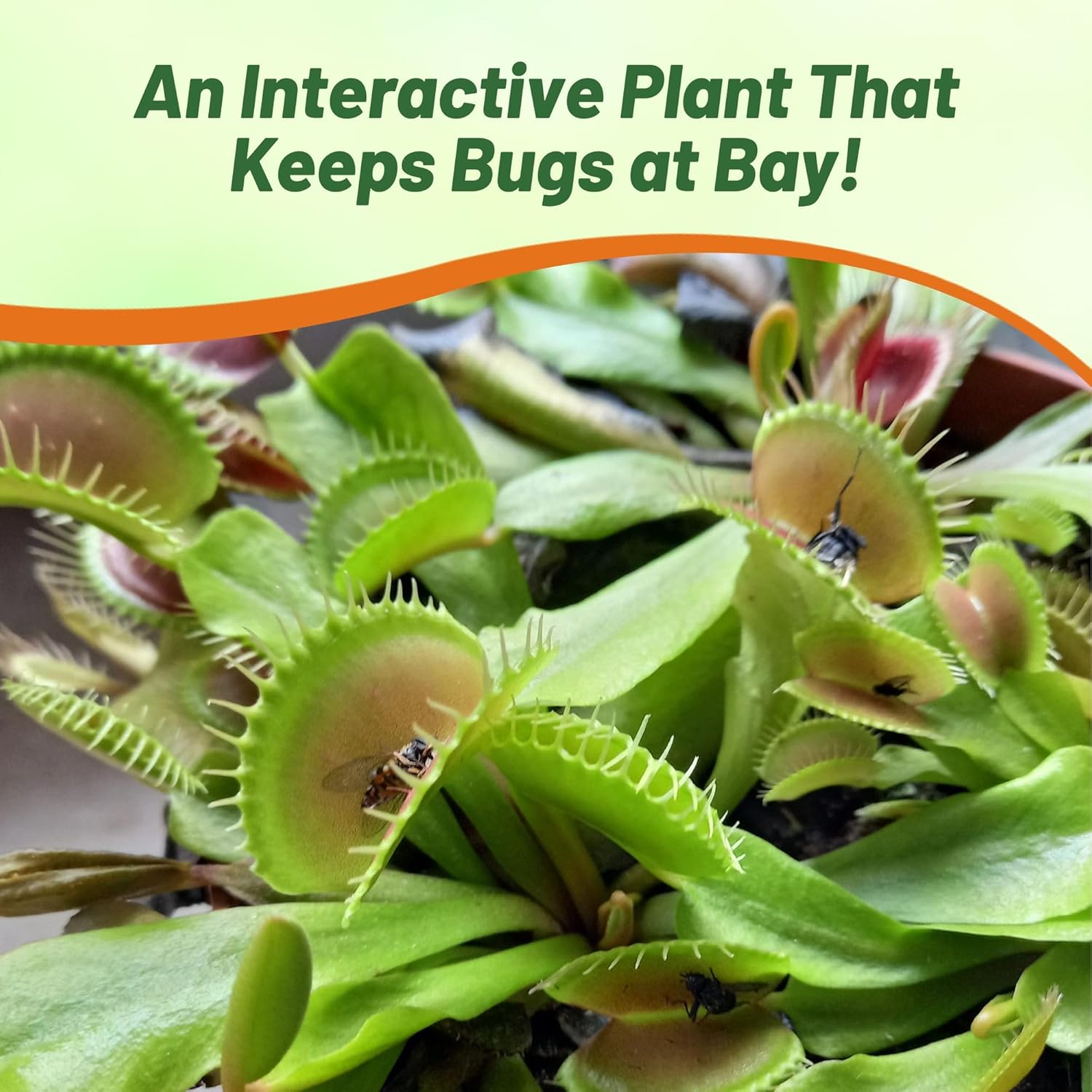

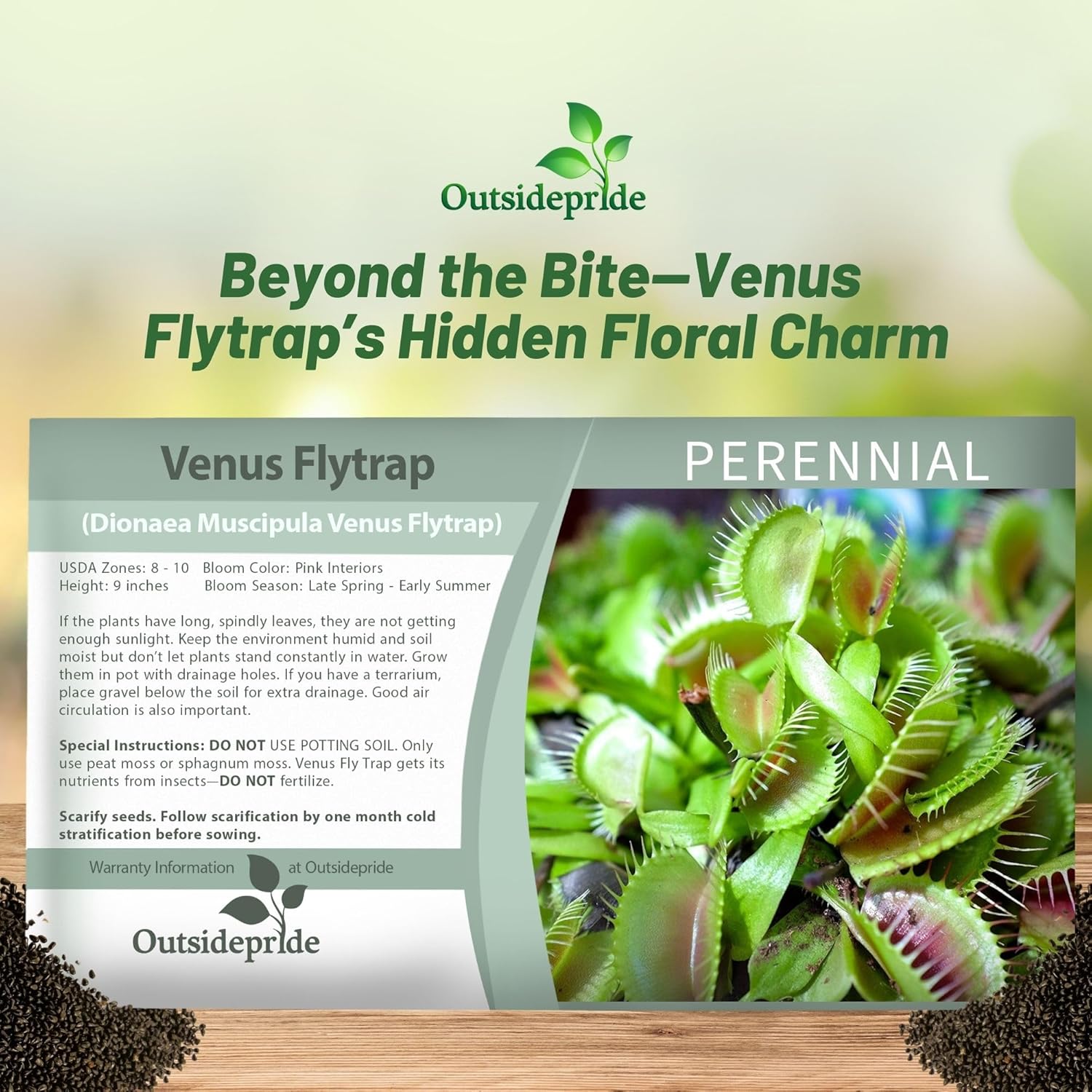
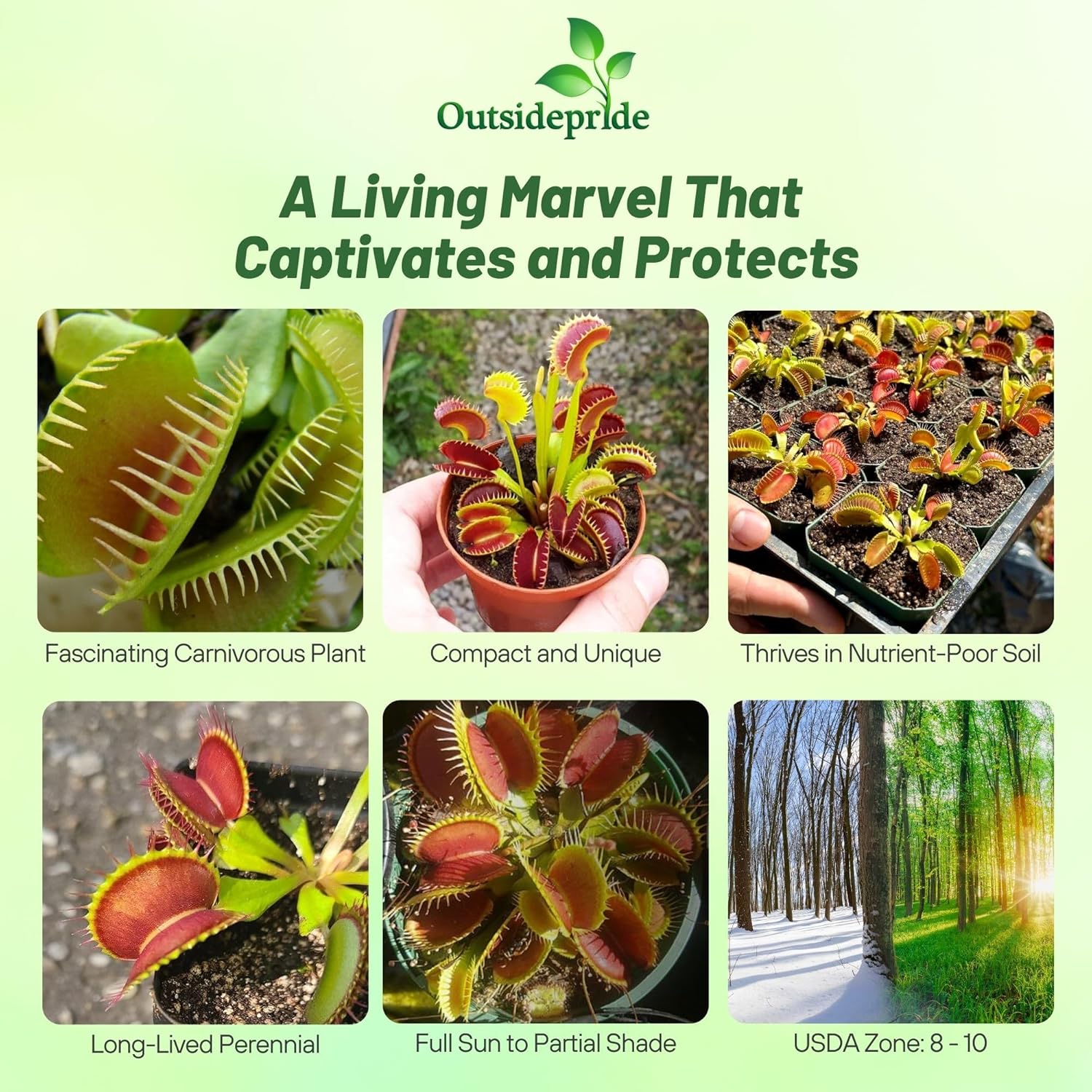
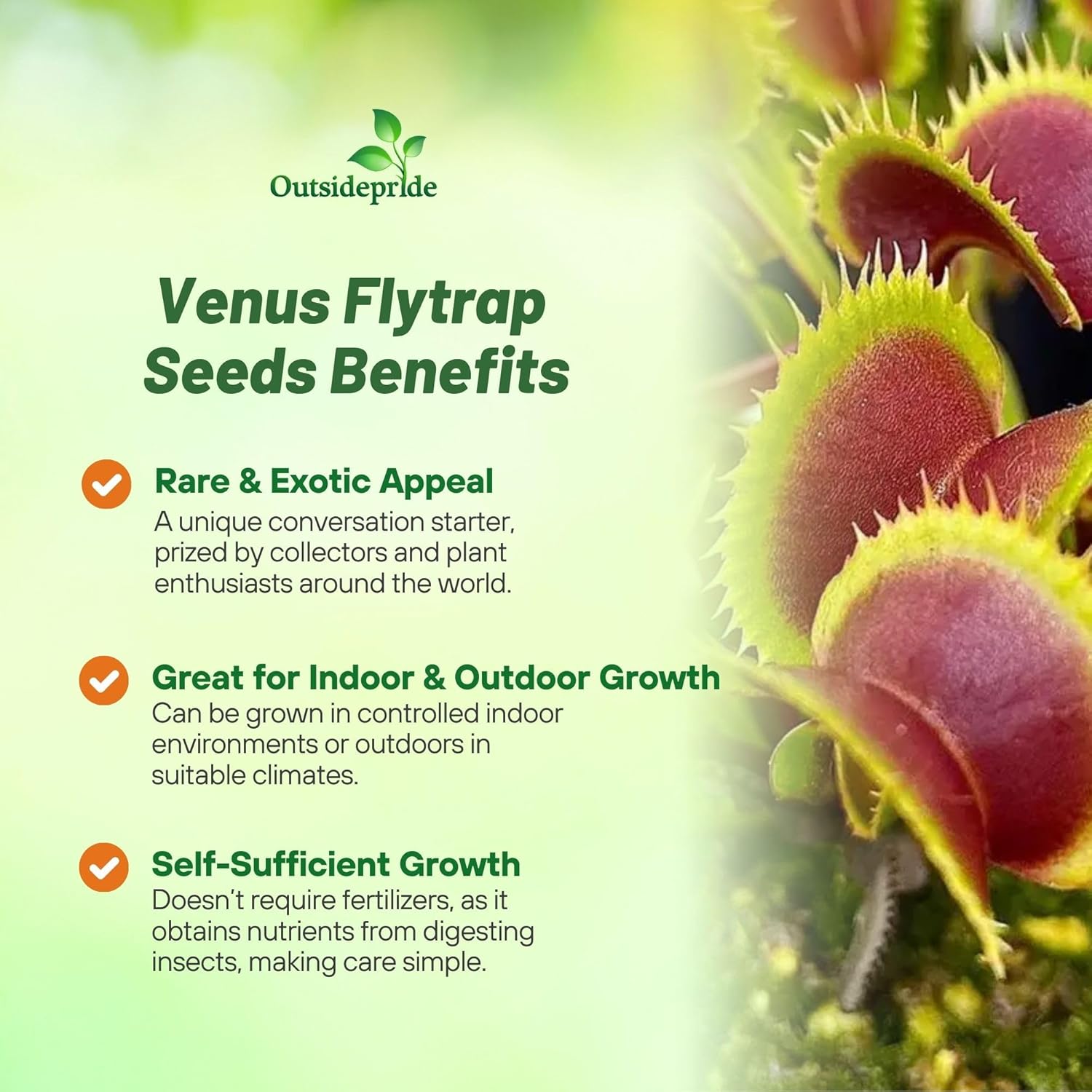
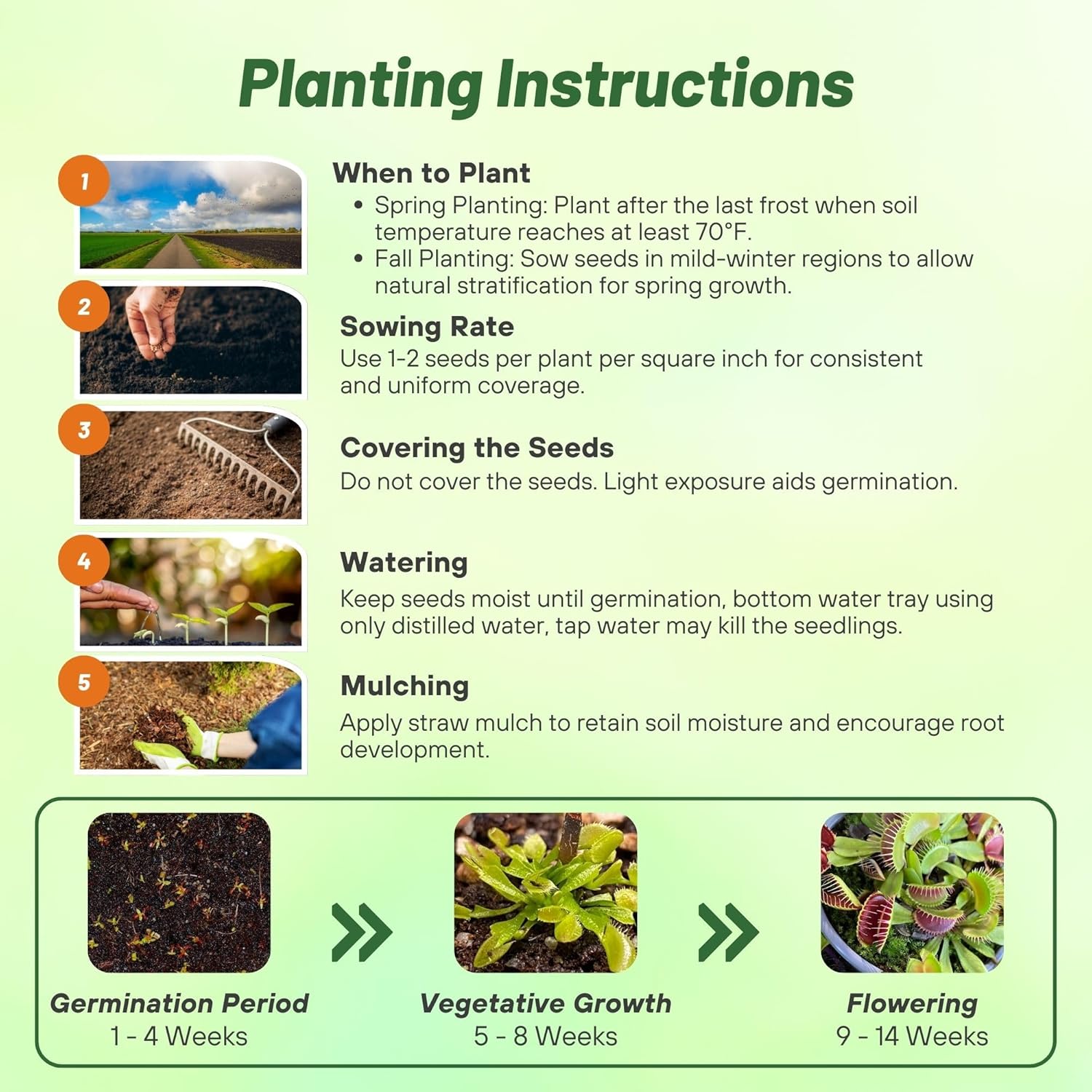
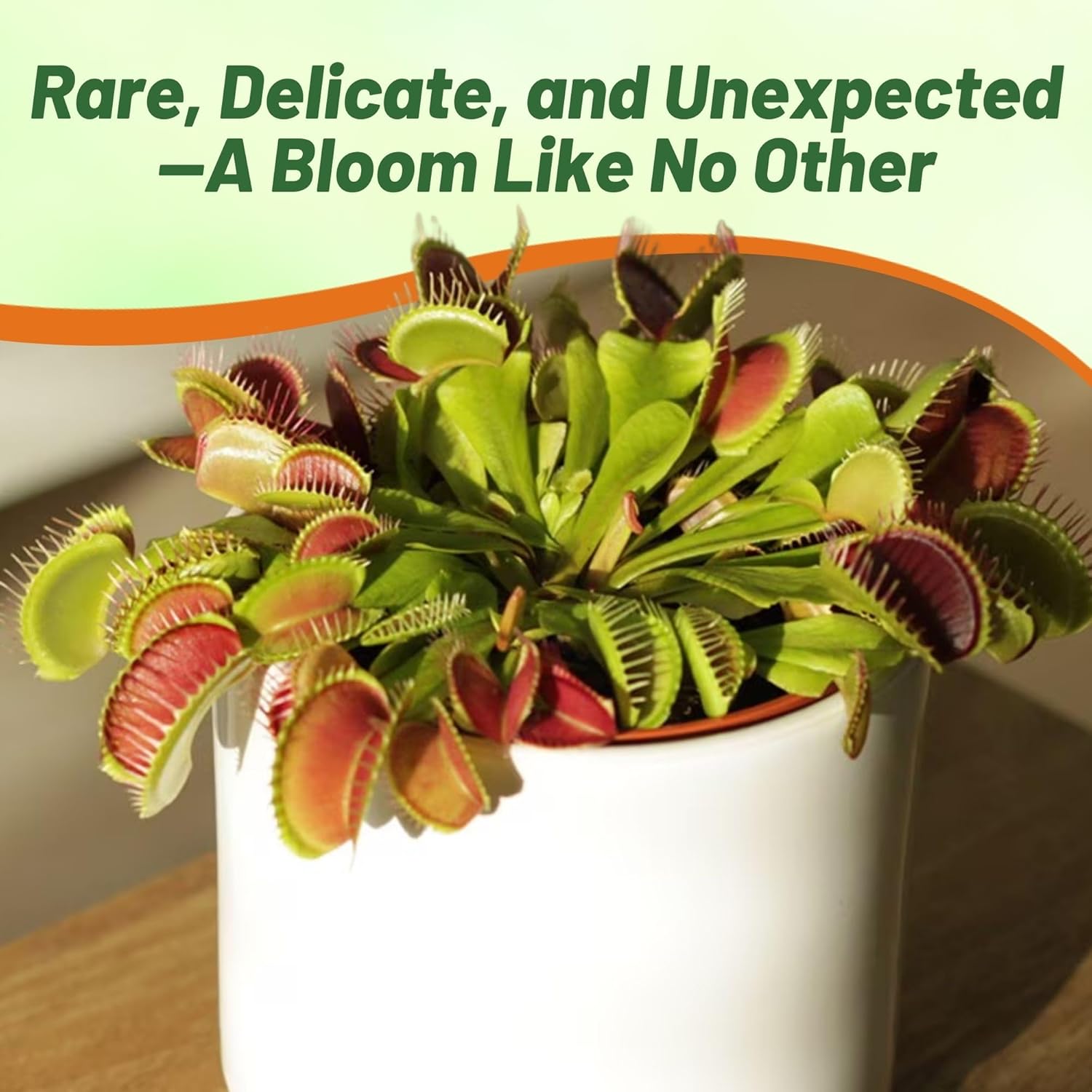

Venus Flytrap Seeds
SEASON
Perennial
USDA ZONES
8 - 10
HEIGHT
9 inches
ENVIRONMENT
Full sun to partial shade
SOIL TYPE
Poor, acidic soil with good drainage
DEER RESISTANT
Yes
HOUSE PLANT
Yes
SEASON
Perennial
USDA ZONES
5 - 10
HEIGHT
10 inches
BLOOM SEASON
Spring through winter
BLOOM COLOR
Mix
ENVIRONMENT
Partial shade
SOIL TYPE
Well-drained, pH 6.1 - 7.5
DEER RESISTANT
Yes
HOUSE PLANT
Yes
LATIN NAME
Sinningia speciosa
SEASON
Annual
USDA ZONES
4 - 10
HEIGHT
6 - 8 inches
BLOOM SEASON
Mid spring to late summer
BLOOM COLOR
Mix
ENVIRONMENT
Full sun
SOIL TYPE
Best in rich, well drain soil
DEER RESISTANT
No
LATIN NAME
Leptosiphon hybrida
SEASON
Perennial
USDA ZONES
7 - 11
HEIGHT
28 inches
BLOOM SEASON
Spring to fall
BLOOM COLOR
Rosy purple
ENVIRONMENT
Full sun to partial shade
SOIL TYPE
Well drained soils, pH 6.6 to 7.5
DEER RESISTANT
Yes
SEASON
Perennial
USDA ZONES
7 - 11
HEIGHT
4 inches
WIDTH
12 - 18 inches
BLOOM SEASON
Early spring to early fall
BLOOM COLOR
Pink
ENVIRONMENT
Full sun to partial shade
FOOT TRAFFIC
Light
DEER RESISTANT
Yes
SEASON
Annual
USDA ZONES
3 - 11
HEIGHT
100 - 140 inches
BLOOM SEASON
Late spring to late summer
BLOOM COLOR
Mix
ENVIRONMENT
Full sun
SOIL TYPE
Well drained, pH 6.6 - 7.5
DEER RESISTANT
No
HOUSE PLANT
No
SEASON
Annual
USDA ZONES
4 - 9
HEIGHT
12 inches
BLOOM SEASON
Late summer to early fall
BLOOM COLOR
Mix
ENVIRONMENT
Full sun
SOIL TYPE
Moist, well-drained, pH 6.6 - 7.3
DEER RESISTANT
Yes
SEASON
Perennial
USDA ZONES
9 - 11
HEIGHT
120 inches
BLOOM SEASON
Mid summer to late fall
BLOOM COLOR
Orange, red, yellow
ENVIRONMENT
Full sun
SOIL TYPE
Sandy, well drained soil, pH 5.5 - 7.5
DEER RESISTANT
Yes
LATIN NAME
Mina lobata
About...
Venus Flytrap (Dionaea Muscipula Venus Flytrap) - This truly unique plant grown from flower seeds is a carnivorous plant. Yes, that is right, a carivorous plant! It catches its prey, mainly insects and arachnids, with a trapping structure formed by the terminal portion of each of the plant's leaves and is triggered by tiny hairs on their inner surfaces.MORE FLOWER OPTIONS
Planting Directions
TEMPERATURE
70F
AVERAGE GERM TIME
Scarify the seeds. Follow scarification by one month cold stratificati...more Scarify the seeds. Follow scarification by one month cold stratification before sowing. Germination 28 - 35 days....less
LIGHT REQUIRED
Yes
DEPTH
Do not cover seeds
SOWING RATE
1 - 2 seeds per plant
MOISTURE
Keep seeds moist until germination, bottom water tray using only disti...more Keep seeds moist until germination, bottom water tray using only distilled water, tap water may kill the seedlings....less
PLANT SPACING
9 inches
Venus Flytrap (Dionaea Muscipula Venus Flytrap) - This truly unique plant grown from flower seeds is a carnivorous plant. Yes, that is right, a carivorous plant! It catches its prey, mainly insects and arachnids, with a trapping structure formed by the terminal portion of each of the plant's leaves and is triggered by tiny hairs on their inner surfaces. When an insect or spider crawling along the leaves contacts a hair, the trap closes if a different hair is contacted within twenty seconds of the first strike. Speed of the venus flytrap closing can vary depending on the amount of humidity, light, size of prey, and general growing conditions. The speed with which traps close can be used as an indicator of the venus flytrap's general health.
Common Questions
How long does it take for a Venus flytrap to reach maturity?
Venus flytrap takes three to five years to reach maturity from seed.
What is the best way to water plants?
Chemicals in tap water can harm or kill plants so use distilled water, rainwater or water collected from a humidifier.
What are some good ways to use this plant?
These do well in bog gardens, in containers, rain gardens, terrariums and water gardens.
Do I need to feed my plants?
If growing as a houseplant, you may want to give the plant an insect about once per month as they may not be getting enough to eat indoors.
Is it ok to touch my plants?
This is not recommended. While an occasional touching won’t immediately kill your plant, frequent triggering of the traps can weaken and eventually kill the trap due to exhaustion from closing without any food to produce more energy.
Can I feed my plants dead insects?
Yes, if you place inside the traps and gently move back and forth to stimulate a live insect your plant will eat them.
Planting Directions
TEMPERATURE
70 - 75F
AVERAGE GERM TIME
21 - 28 days
LIGHT REQUIRED
Yes
DEPTH
Do not cover the seed but press into the soil
SOWING RATE
4 seeds per plant
MOISTURE
Keep seed moist until germination
PLANT SPACING
10 inches
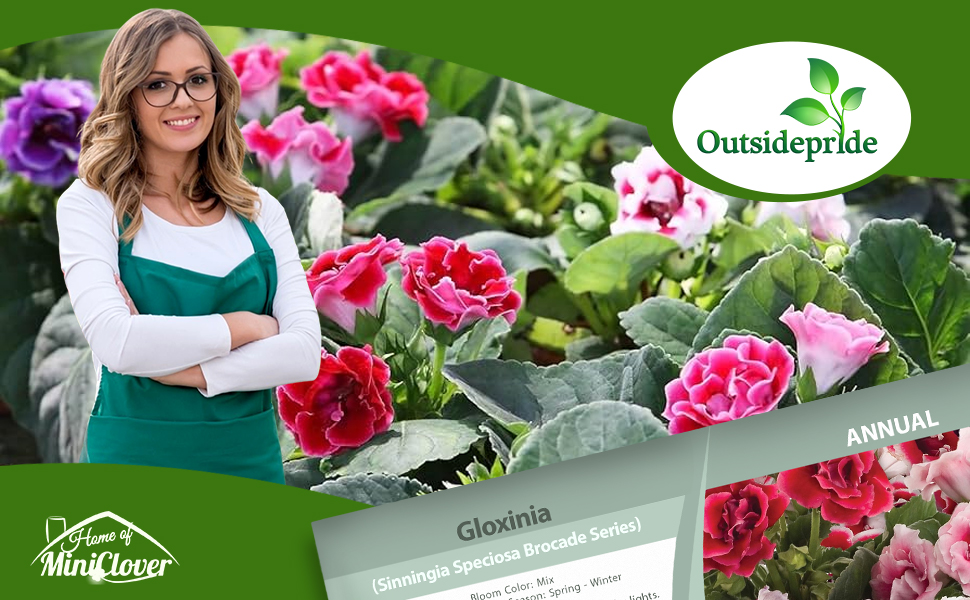
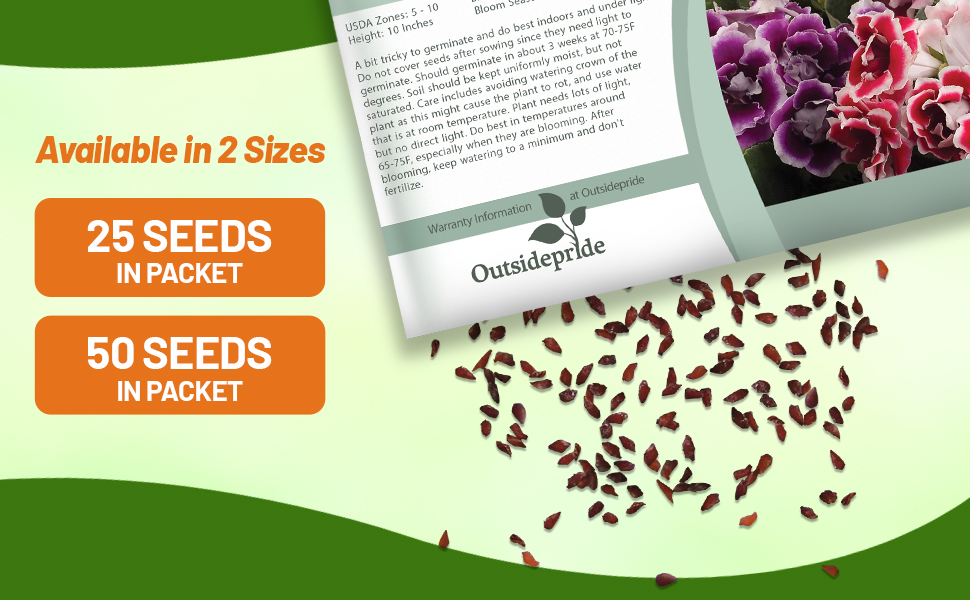
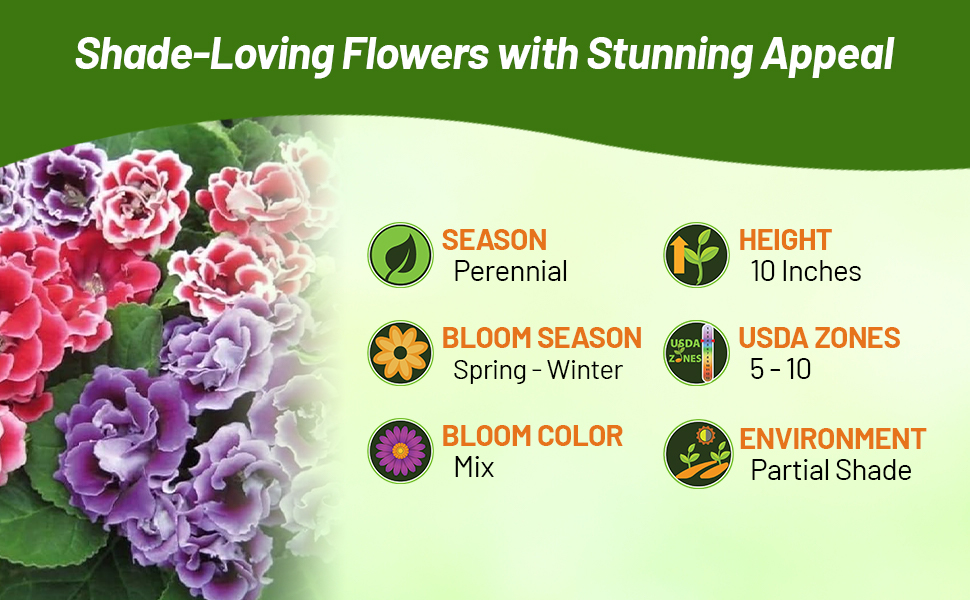
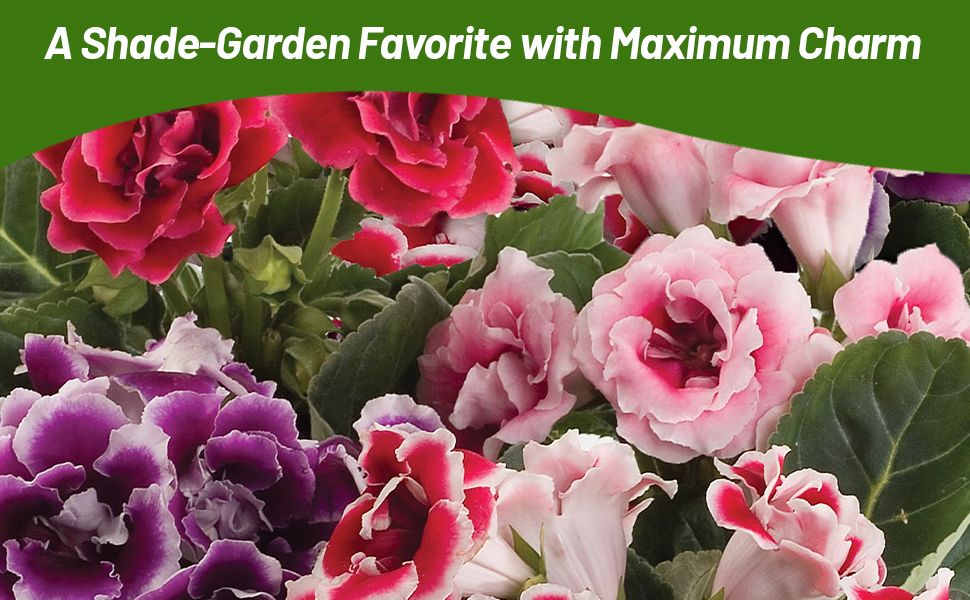
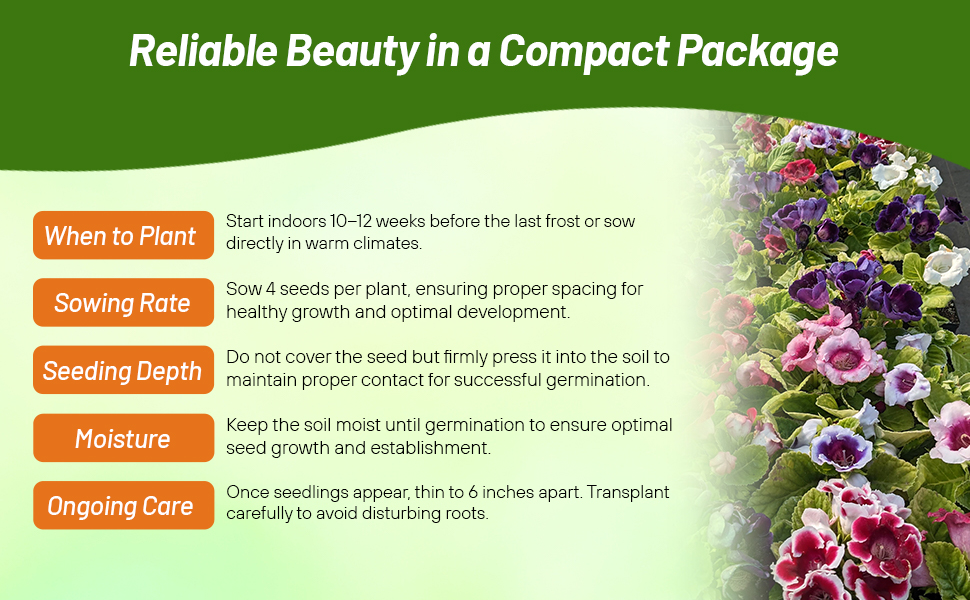
Gloxinia (Sinningia Speciosa Brocade Series) - Sow Gloxinia seeds to produce a beautiful mixture of red, blue, and white blooms. These compact Gloxinia plants blossom four to six months after sowing. They will flower for about 2 months, go dormant for about 2 months, and then begin growing again and start flowering. Gloxinias make a great house plant, giving wonderful, colorful blooms! Sinningia Speciosa is often referred to as Florist's Gloxinia or Brazilian Gloxinia.
Gloxina seeds are a bit tricky to germinate and do best indoors and under lights. Do not cover the flower seeds after sowing since they need light to germinate. Sinningia Speciosa seeds should germinate in about 3 weeks at 70 - 75F degrees. Soil should be kept uniformly moist, but do not keep it saturated. Florist's Gloxinia care includes avoiding watering the crown of the plant as this might cause the plant to rot, and use water that is at room temperature for watering. The Brazilian Gloxinia plant needs lots of light, but no direct light. Gloxinias do best in temperatures around 65 - 75F degrees, especially when they are blooming. After blooming, keep watering to a minimum and don't fertilize.
Common Questions
Do I need to prune my gloxinia?
To encourage a longer bloom season, you will need to deadhead your spent flowers. After the bloom period is over and your plant enters dormancy, prune back any dead or dying foliage.
My leaves are dropping, what do I do?
This can occur from sudden temperature changes such as drafts.
My leaves look scorched, why?
Direct sunlight can burn the leaves of your gloxinia, causing them to scorch and crisp.
My flowers are losing their vibrancy, what do I do?
This is typically caused by inadequate light move your plant to an area with more light but not direct sunlight.
Planting Directions
TEMPERATURE
55 - 65F
AVERAGE GERM TIME
14 - 21 days
LIGHT REQUIRED
Yes
DEPTH
Surface sow seed and light cover no more than 1/8 inch deep
SOWING RATE
3 - 5 seeds per cell or approximately 5000 seeds covers 100 square feet
MOISTURE
Keep seeds moist until germination
PLANT SPACING
8 inches
Leptosiphon Mix (Leptosiphon Hybrida French Hybrids Mix) - Start Leptosiphon seeds to start these dainty little flowers. Leptosiphon French Hybrids has the synonymous botanical name Linanthus androsaceus. This low-growing annual has fern-like foliage and hundreds of sweet little half inch star-shaped flowers that shine out from the foliage. The colors are mixed and bright in shades of rose, yellow, orange and cream. Leptosiphon uses include edging the front of the flower bed, containers, edging a pathway, or as a ground cover. Commonly known as False Baby Stars, this annual is lovely if it is allowed to spill over the edges of rocks or containers. It makes a carpet of color and is stunning!
Grow Leptosiphon seeds directly outside in a prepared seedbed after frost danger has passed. Press the flower seed into the soil and lightly cover. False Baby Stars flowers perform best in full sun, and they prefer rich, well-draining soil.































